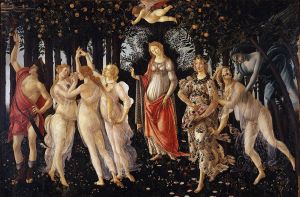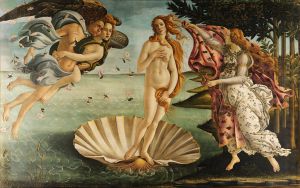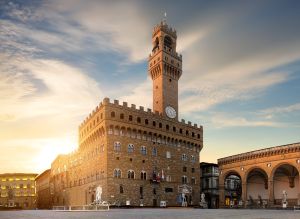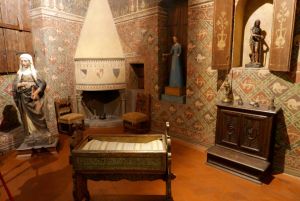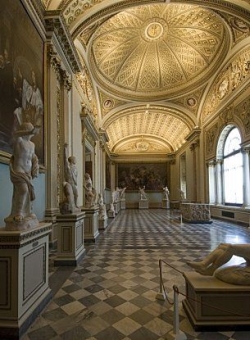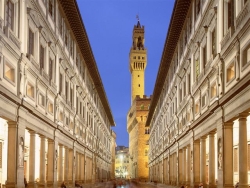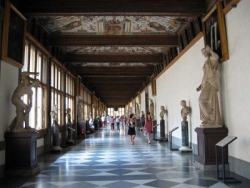|
Florentine Art
The city of Dante, Giotto, Galileo, Botticelli straddles the River Arno in northern Tuscany. Olive and cypress-clad hills rise up to the south and north, looking like background landscapes that Uccello or Gozzoli might have painted. Florence, both the birthplace and the showplace of the Italian Renaissance, is a priceless art and architecture sanctuary which contains a profusion of glories, from Brunelleschi's great cathedral dome to Botticelli's Primavera and the Birth of Venus at the Uffizi and Michelangelo's David in the Galleria dell'Accademia. Florence is the Western world's greatest work of art, both in terms of what it is and what it houses. This is where the Renaissance effectively began. The defining moment happened in 1401 when the doors of the Bapistry beside the cathedral was commissioned. Lorenzo Ghiberti's sculpted bronze masterpieces revolutionised perceptions of art. It was after Ghiberti's creations that those great oligarchs, the Medicis, commissioned stupendous buildings, sculpture and paintings by Vasari, Donatello, Fra Angelico, Michelangelo, Leonardo da Vinci and many others.
Following the trail of the resulting great palaces, church embellishments and art works in the city is like setting off on an amazing treasure hunt. In the process, most people almost inevitably get lost in the maze of Florence's medieval streets, which is half the fun of being here. Inevitably, they will eventually come upon the Uffizi Gallery which contains about 1,800 works, many of them the Renaissance masterpieces: Botticelli's Birth of Venus, Uccello's Rout of San Romano, Raphael's Madonna of the Goldfinch and many more.
The palaces of Florence are as varied as her art treasures. From the Palazzo Vecchio to the Palazzo di Bianca Cappello, the architecture, masonry, and elegant façades are stunning, and their histories are fascinating. Palazzo Vecchio doubles as Florence’s town hall and Renaissance art museum. This fortress-like palace overlooks the Piazza della Signoria and its statues, including Michelangelo’s David. This imposing structure is one of the most important public places in the region. The Palazzo Medici Ricciardi, another palace fortress, was built in the 15th century for Cosimo il Vecchio of the Medici family. Today, it houses the provincial offices and the Riccardiana Library.
The Palazzo Rucellai was built by Bernardo Rossellino and boasts one of the first Renaissance façades in the city. The majestic Palazzo Davanzati is unique because its façade incorporates medieval tower homes and the Davanzati coat of arms. A pleasing blend of architecture, the Davanzati’s interior courtyard features 14th-century arches and vaults, while its top floor has four columns that were added in the 16th century. |
 |

